
How to Use LCD 16x2 attached i2c: Examples, Pinouts, and Specs
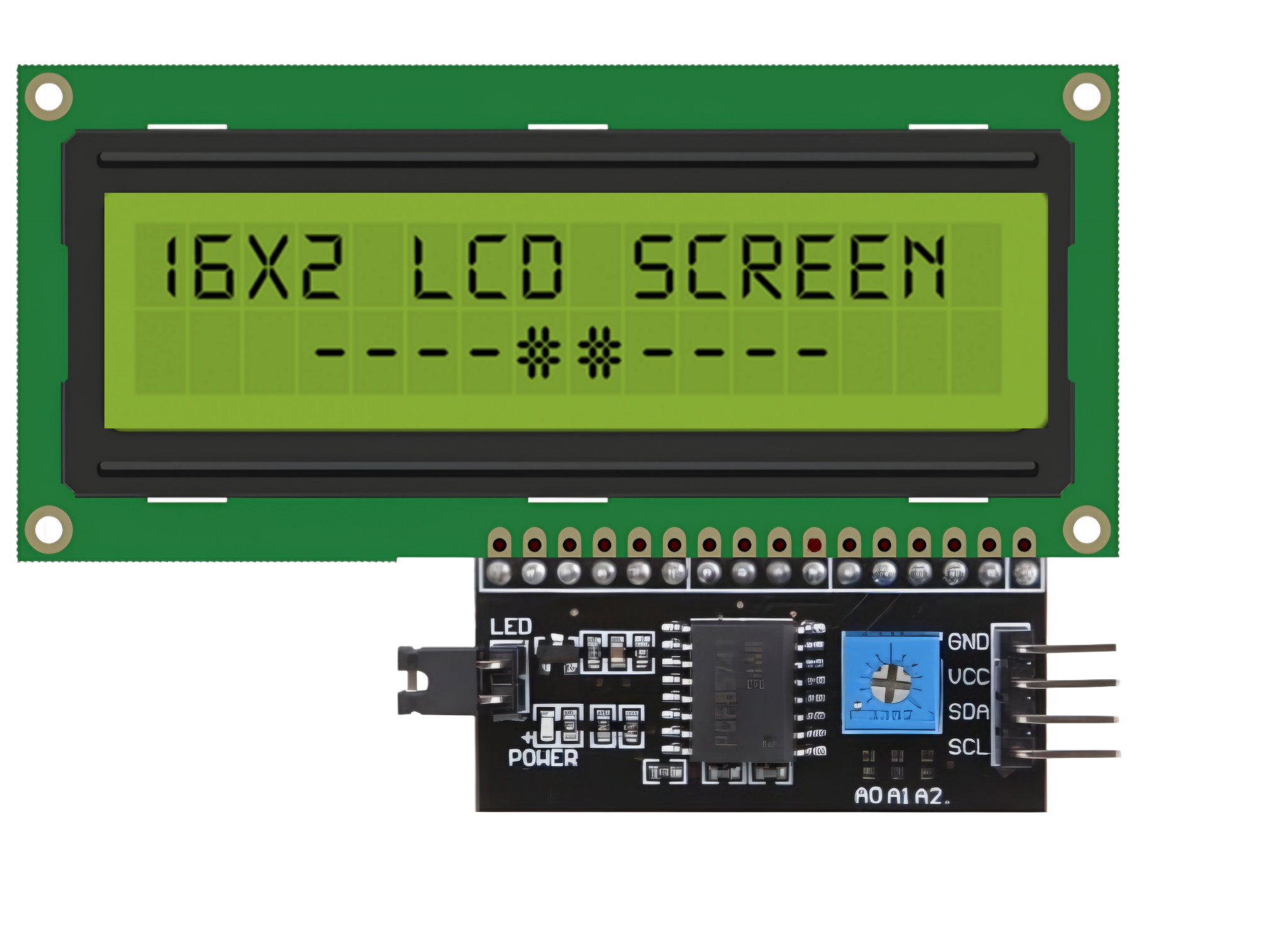
 Design with LCD 16x2 attached i2c in Cirkit Designer
Design with LCD 16x2 attached i2c in Cirkit DesignerIntroduction
The LCD 16x2 with I2C interface is a character-based Liquid Crystal Display capable of displaying 2 lines of 16 characters each. It is equipped with an I2C (Inter-Integrated Circuit) interface, which significantly reduces the number of pins required for connection, making it ideal for microcontroller-based projects. This component is widely used in electronics projects for displaying text, numbers, and simple symbols.
Explore Projects Built with LCD 16x2 attached i2c
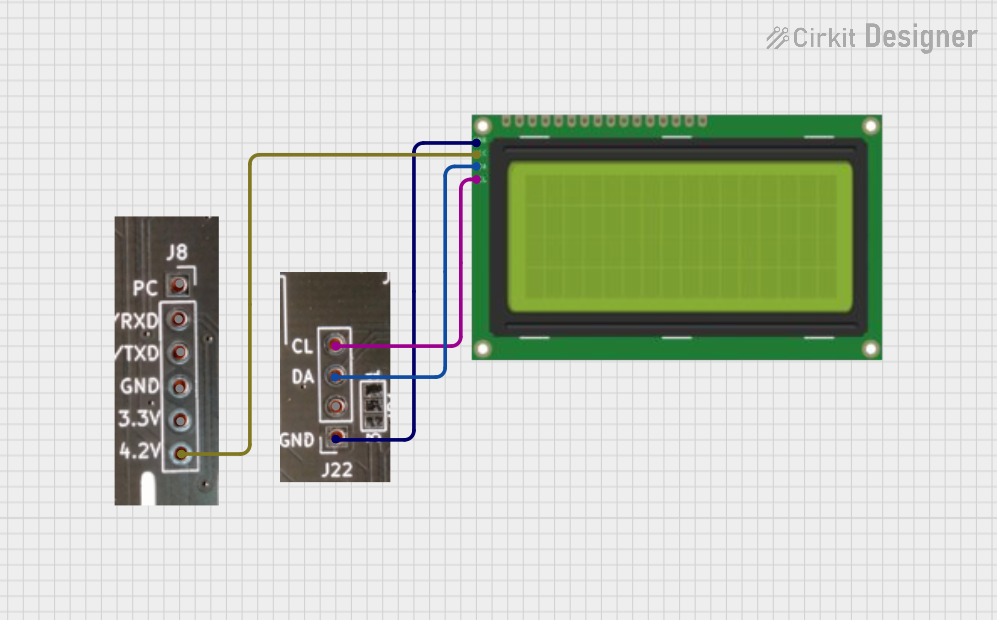
 Open Project in Cirkit Designer
Open Project in Cirkit Designer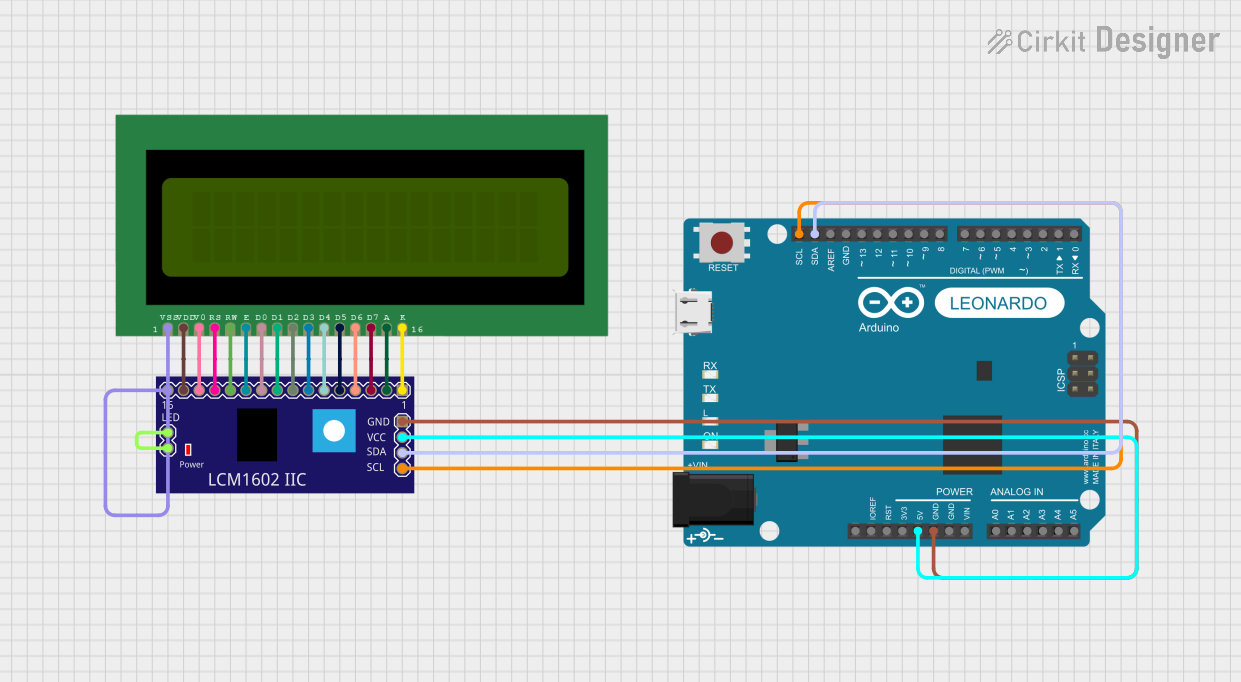
 Open Project in Cirkit Designer
Open Project in Cirkit Designer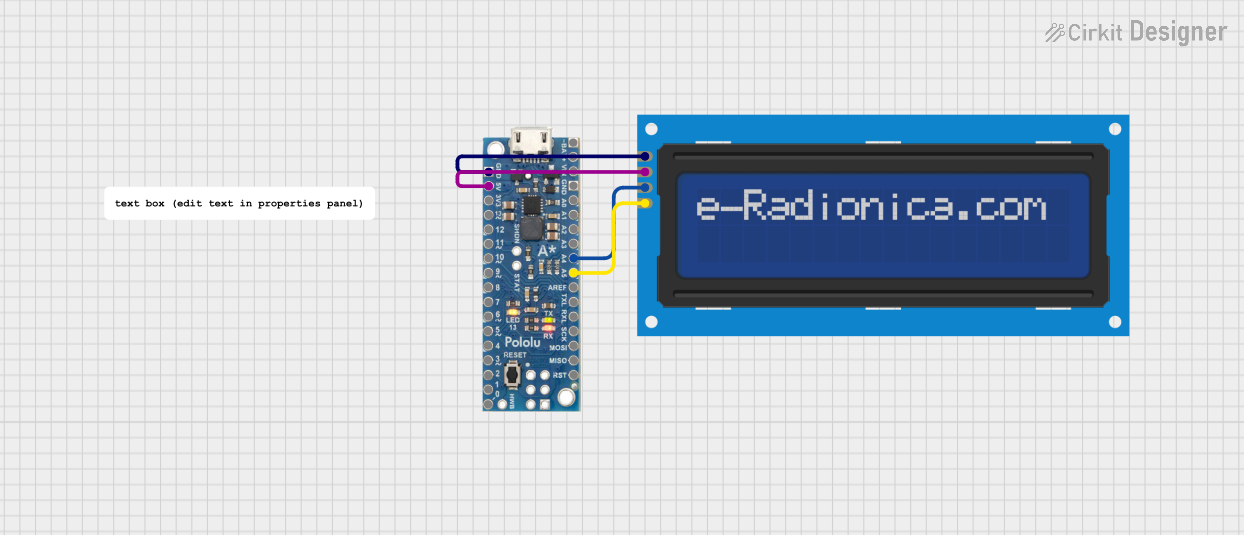
 Open Project in Cirkit Designer
Open Project in Cirkit Designer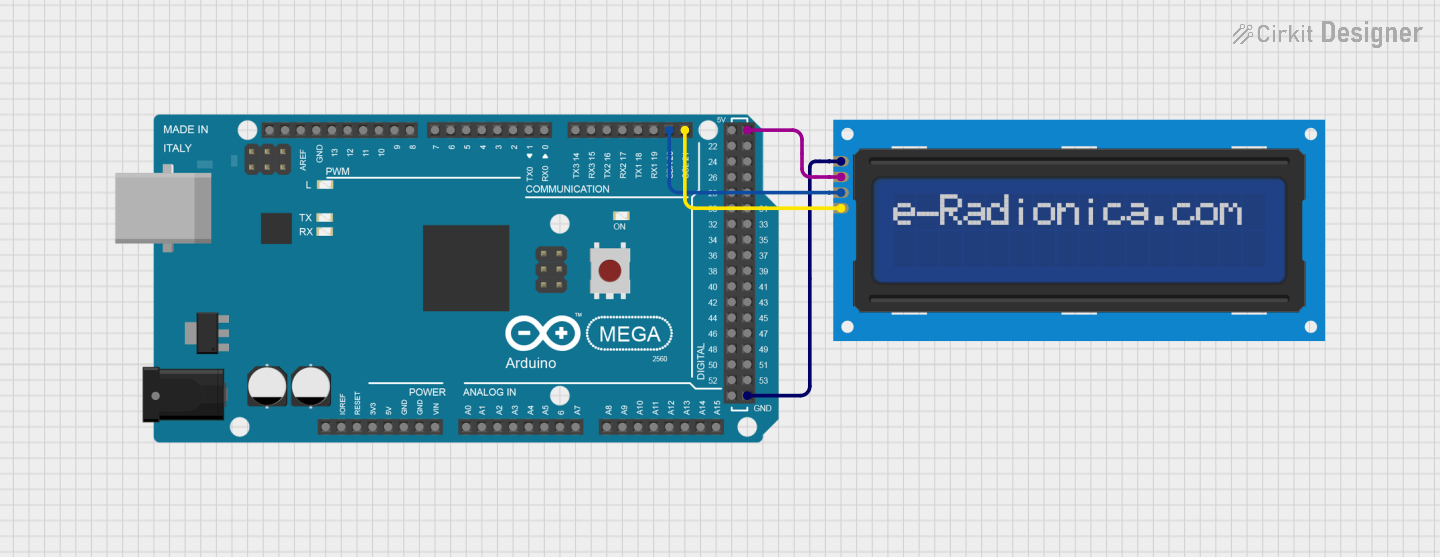
 Open Project in Cirkit Designer
Open Project in Cirkit DesignerExplore Projects Built with LCD 16x2 attached i2c

 Open Project in Cirkit Designer
Open Project in Cirkit Designer
 Open Project in Cirkit Designer
Open Project in Cirkit Designer
 Open Project in Cirkit Designer
Open Project in Cirkit Designer
 Open Project in Cirkit Designer
Open Project in Cirkit DesignerCommon Applications and Use Cases
- Microcontroller-based projects (e.g., Arduino, Raspberry Pi)
- User interfaces for embedded systems
- Real-time data display (e.g., temperature, humidity, sensor readings)
- Educational and prototyping purposes
- Home automation systems
Technical Specifications
Key Technical Details
- Display Type: 16x2 character LCD
- Interface: I2C (requires only 2 data pins: SDA and SCL)
- Operating Voltage: 5V DC
- Backlight: LED backlight (controllable via software)
- Contrast Adjustment: Potentiometer on the I2C module
- I2C Address: Typically 0x27 or 0x3F (configurable via jumpers)
- Dimensions: 80mm x 36mm x 12mm (approx.)
- Character Size: 5x8 dot matrix per character
Pin Configuration and Descriptions
The I2C interface reduces the number of pins required to connect the LCD. Below is the pin configuration for the I2C module attached to the LCD:
| Pin Name | Description |
|---|---|
| VCC | Power supply (5V DC) |
| GND | Ground |
| SDA | Serial Data Line (I2C data pin) |
| SCL | Serial Clock Line (I2C clock pin) |
Usage Instructions
How to Use the Component in a Circuit
Wiring the LCD to a Microcontroller:
- Connect the VCC pin of the LCD to the 5V pin of the microcontroller.
- Connect the GND pin of the LCD to the GND pin of the microcontroller.
- Connect the SDA pin of the LCD to the SDA pin of the microcontroller (e.g., A4 on Arduino UNO).
- Connect the SCL pin of the LCD to the SCL pin of the microcontroller (e.g., A5 on Arduino UNO).
Install Required Libraries:
- For Arduino, install the
LiquidCrystal_I2Clibrary from the Arduino Library Manager. - Go to Sketch > Include Library > Manage Libraries, search for
LiquidCrystal_I2C, and install it.
- For Arduino, install the
Write and Upload Code:
- Use the example code below to display text on the LCD.
Example Code for Arduino UNO
#include <Wire.h> // Include the Wire library for I2C communication
#include <LiquidCrystal_I2C.h> // Include the LiquidCrystal_I2C library
// Initialize the LCD with I2C address 0x27 and dimensions 16x2
LiquidCrystal_I2C lcd(0x27, 16, 2);
void setup() {
lcd.begin(); // Initialize the LCD
lcd.backlight(); // Turn on the backlight
lcd.setCursor(0, 0); // Set cursor to the first column, first row
lcd.print("Hello, World!"); // Print text on the first row
lcd.setCursor(0, 1); // Set cursor to the first column, second row
lcd.print("I2C LCD Test"); // Print text on the second row
}
void loop() {
// No actions in the loop for this example
}
Important Considerations and Best Practices
- I2C Address: Ensure the correct I2C address is used in the code. If the LCD does not respond, use an I2C scanner sketch to detect the address.
- Power Supply: Use a stable 5V power source to avoid flickering or malfunctioning of the display.
- Contrast Adjustment: Use the potentiometer on the I2C module to adjust the contrast of the display.
- Backlight Control: The backlight can be turned on or off programmatically using the
lcd.backlight()andlcd.noBacklight()functions.
Troubleshooting and FAQs
Common Issues and Solutions
LCD Not Displaying Anything:
- Verify the wiring connections (VCC, GND, SDA, SCL).
- Check the I2C address in the code. Use an I2C scanner sketch to confirm the address.
- Adjust the contrast using the potentiometer on the I2C module.
Flickering or Unstable Display:
- Ensure a stable 5V power supply.
- Check for loose connections in the circuit.
Incorrect or Garbled Characters:
- Verify the I2C address and ensure the correct library is installed.
- Ensure the
LiquidCrystal_I2Cobject is initialized with the correct dimensions (16x2).
Backlight Not Working:
- Ensure the backlight jumper on the I2C module is in place.
- Use the
lcd.backlight()function in the code to enable the backlight.
FAQs
Q1: How do I find the I2C address of my LCD?
A1: Use an I2C scanner sketch to detect the address. Upload the sketch to your microcontroller, and the serial monitor will display the detected I2C address.
Q2: Can I use this LCD with a 3.3V microcontroller?
A2: The LCD requires 5V for operation. If your microcontroller operates at 3.3V, use a logic level shifter for the SDA and SCL lines.
Q3: Can I display custom characters on this LCD?
A3: Yes, the LiquidCrystal_I2C library supports custom characters. Refer to the library documentation for details on creating and displaying custom characters.
Q4: What is the maximum cable length for the I2C connection?
A4: The maximum length depends on the pull-up resistors and the I2C clock speed. For typical setups, keep the cable length under 1 meter to ensure reliable communication.